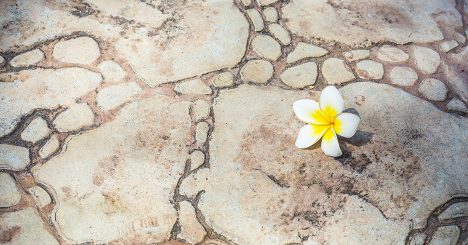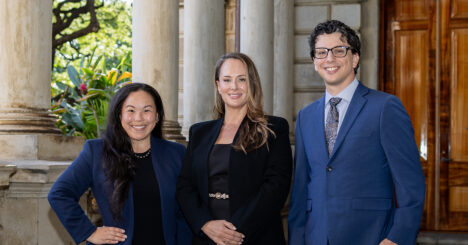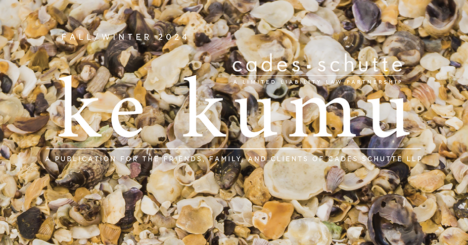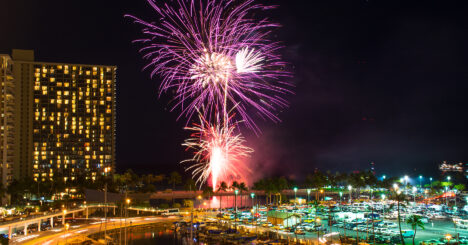In 2007, the skeletal remains of at least 60 Native Hawaiians were found during development of Hawai‘i’s flagship Whole Foods Market in Kaka‘ako. Beginning in 2009, during construction of a multi-purpose center, Kawaiha‘o Church discovered what would amount to more than 600 Native Hawaiian burials. The County of Kaua‘i faced numerous accusations that construction of a public coastal pedestrian/bike path would result in desecration of Native Hawaiian burial sites, although studies showed that no burials would be present and no burials were ever found.
In the cases of Whole Foods and Kawaiha‘o Church, the landowners had all necessary permits at the time the burials were discovered. However, despite the permits the landowners were attacked in the press, developments were delayed for years, numerous administrative and judicial actions were filed, and millions of dollars were spent defending the development against accusations of “desecration” of Native Hawaiian burial sites. But what is desecration? Is it a legal question, a cultural question, or both?
The purpose of this article is not to correct or even comment on the sincerely held beliefs of many people in the community regarding desecration of burial sites. This article simply provides the reader with insight into the authentic customs and traditions of Native Hawaiians concerning Native Hawaiian burial sites as described by Native and non-Native Hawaiian scholars, whose credibility and authority on the matter are beyond reproach.
***
It is illegal in Hawai‘i to knowingly take, appropriate, excavate, injure, destroy, or alter any burial site or the contents thereof during the course of land development or land alteration activities which may affect a burial site, without obtaining the required governmental approvals. In addition to administrative fines, the criminal penalty for violating this law is up to one year in jail and a fine not to exceed $25,000 for each day such violation continues to occur (HI Rev Stat § 6E-71). I think that such acts would appropriately be called desecration.
But what about developing while having all the requisite permits? What if an excavator inadvertently discovers bones during the development process? What if the State Historic Preservation Division (SHPD) approves the relocation of the remains with the support of the burial council, which is comprised of native Hawaiians and land owners who determine the appropriate treatment of previously discovered burial sites, and the Office of Hawaiian Affairs, as in the Whole Foods case? Put simply, is legal development itself desecration? This is question with cultural and legal aspects.
The Hawai‘i State Constitution requires the State, among other things, to protect all rights, customarily and traditionally exercised by Native Hawaiians for cultural and religious purposes, subject to the right of the State to regulate such rights. This is the backdrop for the protection of all Native Hawaiian traditional and customary rights in Hawai‘i. So what are the customary and traditional practices with regard to Native Hawaiian burials and do these customs and traditions consider as “desecration” a development that has obtained requisite governmental approvals and otherwise has complied with the law?
It is my sincere hope that, by understanding how Native Hawaiians traditionally and customarily treated burial sites, we, as a multi-cultural island community, can authentically and respectfully address this issue.
Generally speaking, Hawaiian custom and tradition disassociated the ‘uhane (spirit) from the kino (body). During life the ‘uhane could wander from the body, although such a habit was dangerous because a disassociated spirit could be trapped and prevented from returning to the body, which would be dead or inert without it. Even after death the lapu (visible form of the deceased) inhabited its bones and could leave them, taking on a human shape and speaking in the same voice as in life.
Hawaiian culture considered corpses unclean and a strict kapu (prohibition) was placed on all dead bodies. The kapu of an Ali‘i (nobility) was for ten days or longer, the kapu for a commoner was about three days, and the kapu for a person of low class would only be for a day or two. During the kapu period only blood relatives were allowed to be near the body, all others were strictly forbidden to come into contact with the dead or to interact with the relatives of the dead, as they were also considered to be defiled. During this time the corpse was prepared for burial by the ‘ohana (family) of the deceased.
After the corpse was physically prepared for burial, it was buried at night in a secret place to protect its bones from being discovered. A corpse buried in this manner was said to be huna kele. This was the favorite way of dealing with the bones of a chief of very high status, hiding them in caves and secret places never to be discovered again.
The tradition of hiding the bones of the deceased is believed to have begun as a means to protect against desecration. Specifically, Hawaiians feared that the bones of their loved ones would be dug up and used as arrows for rat shooting and material for fishhooks or other items. This makes sense as the natural materials of Hawai‘i at that time were limited to wood, stone, and whatever bones could be found. In order to protect them from such desecration, the families of the dead sought out secret places to hide the bones, well hidden from the eyes of men and unknown to the “wizards” of the night (ku pua o ka po) who might reveal them. In this regard, venerated Native Hawaiian scholar Samuel Kamakau wrote in his seminal work Ka Po‘e Kahiko, “since the main thing was to hide the bones, they were buried under new houses, in roadways, in banks of taro patches, or any place where they would be concealed.”
Mary Kawena Pukui, in Nana I Ke Kumu, vol. I, later synthesized over one hundred years of scholarship and described the five levels of desecration in ascending order: 1) speaking of the bones; 2) physically uncovering or exposing the bones to the sunlight; 3) using the bones for material or practical purposes (arrows, needles, fish hooks); 4) using the bones as a means to control the lapu for malevolent purposes and spiritual warfare; and 5) burning and completely destroying the bones. In order to avoid such desecration, the bones of chiefs and loved ones were frequently unearthed and relocated to avoid disturbance or discovery. However, development is never mentioned or considered to be desecration. In fact, Kamakau’s description of the protection of burials included hiding bones under development, which Hawaiians believed would prevent their disturbance.
So what does this all mean? Is lawful development with all requisite permits desecration? Based on my understanding of Native Hawaiian custom and tradition, I don’t think a permitted development that has gone through all appropriate legal review processes would be considered desecration by my ancestors. In fact, some of my kupuna (elderly relatives) may have seen a proposed development as an opportunity and a means to protect the remains of their loved ones, while others may have desired to have the remains removed and reinterred in a secret location in the mountains or an underwater cave. However, there does not appear to be a traditional and customary foundation to support the concept that using the presence of burials was an appropriate method to stop development. In short, the answer is that the question is not so simple as saying it is desecration.
This article was published as part of the Spring/Summer 2021 issue of ke kumu, Cades Schutte’s client newsletter. Read the full publication, which explores some of the laws unique to Hawai‘i.





